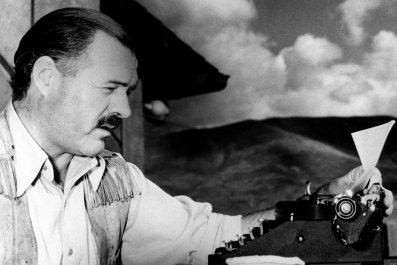Let's play a quick game. I'll toss out a phrase and you say the first thing that comes into your head. Ready?
"Pressure cooker."
I know that nine out of 10 of you said "kitchen disaster," and the rest said, "Scalding Hot Potatoes Ricocheting Off My Forehead!"
The pressure cooker has always terrified people, and with good reason. While the concept has been around since the 17th century, when a French physicist named Denis Papin created the "steam digester," pressure cookers only became popular in the United States in the 1950s, when Presto introduced a lightweight aluminum version. These pots were efficient and economical, but they also lacked the safety features today's models have thankfully acquired.
My mother-in-law got her first pot in 1972 and used it night after night, year after year to quickly feed her family when she got home from work. And night after night, year after year, that machine, which looked like a stove-top-sized Dr. Who villain, rattled and hissed until the day's dosage of carrots and potatoes was ready. But even she abandoned hers, sometime in the late 1990s, after a near-miss with a pot of spinach.
A dedicated coterie of eager bloggers and fans have embraced the modern, safer pressure cookers with a near religious devotion, which is also accompanied by an air of defensiveness, probably due in part to the pressure cooker's explosive reputation. The recent resurgence in pressure cooking's popularity has prompted many of the biggest names in kitchen electrics, such as Breville and Cuisinart, to bring their own models to market. But in a world of slow cookers and microwaves, why would you even consider buying one?
Simply put: speed, efficiency, flavor and nutrition.
In a pressure cooker, foods typically cook 70 percent faster. Consider the lowly dried bean: Throw some into a pot with water and about 20 minutes later you have fully cooked beans. (Try that in a conventional pot and all you'd find is rock-like legumes floating in water.) Don't stop at beans: Throw all the ingredients for black bean soup into the pot and an entire cauldron of soup can be ready in less than an hour. Vegetables are done in minutes. Long-grain rice is ready in three minutes, salmon in four. A delicate chocolate cheesecake can be cooked in 35 minutes, for yes, the pressure cooker also does a lovely job at cooking custards and even some cakes.
Chefs, nutritionists (and my mother-in-law) will tell you that all that steam pressure means all the flavor and nutrients stay inside the food, instead of leaching out, as happens when boiling. A 2007 study by the Journal of Food Science showed pressure-cooked broccoli retained 90 percent of its vitamin C, but only 78 percent remained after steaming and 66 after boiling. Take that, Linus Pauling.
If you're like me, though, giddy as you are about all those tasty nutrients, you still are worried it's going to blow up.
With trepidation, I tested the Cuisinart six-quart Electric Pressure Cooker. Unfortunately, the operating manual didn't hold my hand the way I wanted. The illustrations on how to adjust the pressure release valve were vague. (If it's important to ensure that the pressure cooker valve is lined up dot-to-dot, then by all means, put a picture in the manual that is large enough to read properly.) The first time I used it, I left the valve in the wrong position, and it released all the steam before cooking, leaving my black beans burned and me bitter. I paid more attention in round two, and shortly thereafter turned out a creamy coconut rice pudding in 25 minutes and a curried lentil soup in about 15 minutes that no Polar Vortex could put asunder.
I made chicken stock (fantastic) and beefy macaroni and cheese (awesomely easy). My greatest success to date has been arroz con pollo. The rice was soft and absorbed all the luscious fatty chicken juices and garlic. The chicken was tender and moist. Sure, it's a bit misleading to say the whole thing cooked in 20 minutes. There's five to 10 minutes for the pressure to be released so the lid can be unlocked. For precision's sake, let's say, from chopping to full pressure release, it took 35 minutes until dinner was ready, but most of those were spent trying to figure out how to monetize my cat.
Two or three meals into my new life under pressure, I realized I'd stopped worrying and was less no longer screaming at my children to "step away from the machine!" The Cuisinart cooker heated up quickly, browned meats as perfectly as if I were cooking on the stove and, best of all, cleaned up easily.
I have begun to master the new rules of pressure cooking and thanks to my friend, Mr. Internet, I was never far from someone who would tell me just how to make adzuki beans or artichokes sing. Websites such as HipPressureCooking.com and CooksIllustrated.com eliminate the guesswork, and also offer many recipe innovations that push you past the expected pot roast. Why not whip up a delicious weeknight meal of octopus and potato salad? (You may want to keep a pot roast in reserve, however.)
In the story of the race between the tortoise and the hare, I always secretly rooted for the hare, mostly because he showed the good sense to hurry through something uninteresting so he could take a nap. A similar belief informs my new admiration for the pressure cooker. And if you'll excuse me, I'm going to put dinner in the pot and grab myself a siesta.
























